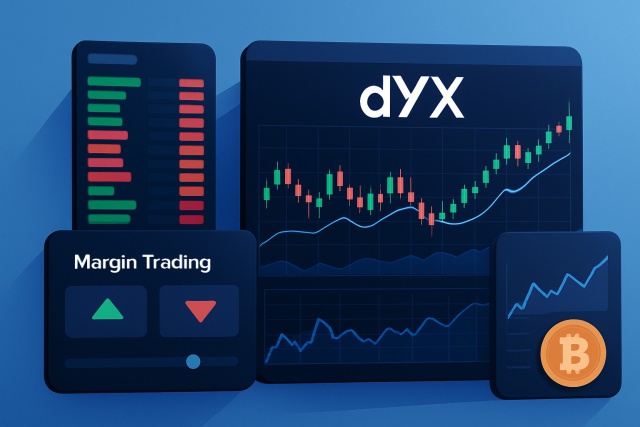Uniswap Liquidity Pools Explained Simply


Uniswap is one of the go-to decentralized exchanges these days, allowing anyone to swap cryptocurrencies directly without the usual middlemen getting in the way. It operates through liquidity pools—think of them as smart contracts holding pairs of tokens—which make peer-to-peer trading on the Ethereum blockchain not just possible, but surprisingly smooth and straightforward.
Getting a clear sense of how Uniswap liquidity pools function is pretty important whether you are looking to swap tokens or earn a little extra by adding liquidity. These pools ditch the usual order books and let DeFi users trade around the clock with less headache from the other side. When you throw your assets into these pools you start earning a slice of the fees from trades which can be a nice way to generate some passive income on the side.
What Exactly Are Uniswap Liquidity Pools? Let’s Dive In
Uniswap liquidity pools are smart contracts that hold two different tokens side by side, making it easy for traders to swap between them without fussing over a traditional order book.
Trades happen straight against the liquidity sitting in pools, and prices are determined by an algorithm that looks at the ratio of tokens.
- Token pairs: Every liquidity pool holds two different tokens that users can swap back and forth like a well-choreographed dance between coins.
- Liquidity providers (LPs): People who add equal values of both tokens into the pool to keep the system humming smoothly.
- Smart contracts: These automated programs manage the pool, execute trades, and handle fee distribution.
- Pool reserves: The current stash of each token sitting in the pool ready for the next trade.
- Price determination: Thanks to the AMM formula prices shift based on token ratios keeping the pool balanced like a tightrope walker maintaining their poise.

Understanding How Uniswap Liquidity Pools Work, Step by Step (And Why You Might Care)
Adding Liquidity: Users contribute equal-value amounts of two tokens, say ETH and USDC into a shared pool.
Receiving LP Tokens: In return they receive liquidity provider tokens that act as a receipt showing their slice of the pool pie.
Trading via the Pool: Other users then swap tokens by tapping directly into the pool’s reserves making seamless trades without the usual middlemen.
Price Calculations: Prices ebb and flow depending on the ratio of tokens in the pool.
Earning Fees: Every trade chips away a tiny fee which gets pooled and divvied up fairly among all the LP token holders.
Uniswap leans on the trusty constant product formula written as x * y = k where x and y stand for the reserves of each token in the pool and k stays constant. This setup keeps the product of the reserves steady no matter how many swaps occur. Prices shift on their own and adjust smoothly as trades shuffle token amounts.
Adding Liquidity on Uniswap A Handy Guide for Beginners Who Want to Dive In
Double-check that you’ve got a wallet that plays nicely like MetaMask and the two tokens you plan to deposit. It’s also worth taking a moment to understand impermanent loss, a tricky phenomenon where shifts in token prices can mess with your returns compared to simply holding the assets.
Connect your Ethereum wallet to the official Uniswap interface.
Pick the token pair you want to add liquidity for, just like choosing the right ingredients for a recipe.
Type in how much of each token you’re putting in, making sure their values line up nicely with the current prices.
Hit confirm and send off the transaction. Before you know it, you’ll receive LP tokens representing your slice of the liquidity pie.
Keep a casual but regular check on your liquidity position. It’s wise to stay on top of rewards and watch out for any curveballs that might come your way.
Avoid running into the usual headaches by keeping a close eye on your slippage settings to prevent trades from falling through due to price shifts during confirmation. Gas fees on Ethereum can be all over the place, so it usually pays off to time your transactions when those fees decide to take a dip.
Taking a Closer Look at the Ups and Downs of Uniswap Liquidity Pools
Impermanent loss kicks in when the token prices in the pool drift away from their initial deposit value, which can nibble away at your returns compared to simply holding onto the tokens.
- Trading fees earned from swaps provide liquidity providers with a fairly reliable stream of income, which can be a nice little bonus in the hustle and bustle of the market.
- Token value growth can lead to some extra gains, especially if the tokens in the pool decide to play nice and climb in price over time.
- Impermanent loss is a bit of a sneaky risk that kicks in when token prices drift significantly apart from each other, so it is something to keep an eye on.
- Smart contract weaknesses still linger as a potential risk, though thorough audits definitely help keep that chance on the lower side.
It’s a good idea to provide liquidity to stablecoin pairs because their token prices usually move in tandem, which helps keep impermanent loss at bay. I’ve found it’s wise to stick with audited smart contracts and maybe dip your toes in the water with smaller positions first to get a real sense of how these pools behave.

Steps for Removing Liquidity and Claiming Your Rewards (Trust me, it’s easier than it sounds)
Head over to your liquidity positions on the Uniswap interface.
Choose the pool you want to pull your funds from and pick wisely of course.
Figure out how many of your LP tokens you’re ready to redeem. No pressure, take your time.
Confirm the transaction to redeem your LP tokens and snag your share of the underlying tokens along with any fees you’ve earned.
Pulling out a big chunk can shake up pool prices and cause slippage so it’s smart to plan this step thoughtfully.
Withdrawing means you are making a transaction on the Ethereum blockchain, so be prepared for network fees and the occasional hold-up when things get busy. If you play your cards right and time your withdrawal during those quieter moments with lower gas fees—plus keeping a close watch on price swings—you'll likely squeeze the most value out of your redeemed tokens.
Handy Tips and Tools to Keep Your Uniswap Liquidity in Check (Without Losing Sleep)
To snag the best returns without letting risks run wild you can turn to analytics platforms like Uniswap Info or DeFi Pulse. They’re great for keeping a close watch on your pool’s performance and tracking impermanent loss while staying ahead of market trends.
- Spread your liquidity across different pools to help reduce risk a bit—it’s like not putting all your eggs in one basket.
- Keep a close watch on impermanent loss and balance it with the fees you’re earning. It is a delicate dance, but definitely worth the effort.
- Adjust your liquidity allocations as market conditions and token volatility change. Staying flexible can really pay off in the long run.
Frequently Asked Questions
How do I know which Uniswap liquidity pool to join as a beginner?
A good place to start is with stablecoin pairs like USDC/DAI where impermanent loss tends to be low since their values usually stay close. You might also want to watch high-volume pools such as ETH/USDC because they often bring in steady fees and act as reliable rockstars of the pool world. Checking stats like total value locked (TVL) and trading volume on Uniswap Info can help you find pools with more activity and better rewards.
Can I lose money providing liquidity on Uniswap?
Yes, the biggest risk is impermanent loss when token prices drift apart more than you want. But trading fees often help soften that blow. Other risks include rare smart contract vulnerabilities and sudden market crashes which can affect your stake. In my experience, spreading funds across multiple pools and regularly checking your positions helps keep risks manageable.
How often are trading fees distributed to liquidity providers?
Trading fees set at 0.3% per trade build up continually and get automatically added back into the pool’s reserves. When you pull out your LP tokens, you receive your share of the accumulated fees and your original tokens with no extra claiming steps. It’s a neat passive setup once you get the hang of it.
What’s the minimum amount required to add liquidity on Uniswap?
There’s no hard minimum but Ethereum gas fees often feel like a punch to the wallet so tiny deposits usually aren’t worth it. A ballpark of $500 to $1,000 per pool makes the math work better and covers those costs. Also, remember to add equal USD value of both tokens—say $500 worth of ETH paired with $500 worth of USDC—to keep things balanced and avoid mismatches.
How do I track my Uniswap liquidity pool performance?
Platforms like Uniswap Info, Zapper.fi or DeBank offer real-time updates on LP token value, impermanent loss and fees earned. These tools provide current snapshots and historical data, which can be handy when deciding whether to tweak your positions or call it a day.
Is providing liquidity on Uniswap better than just holding tokens?
It really depends on your situation. Providing liquidity lets you earn fees but opens you to impermanent loss. For stable or closely linked pairs like ETH/WETH those fees usually tip the scales in your favor. But if you’re dealing with pairs that swing wildly, holding tokens might be safer. Weighing expected fee income against potential price swings is key before taking the plunge.






